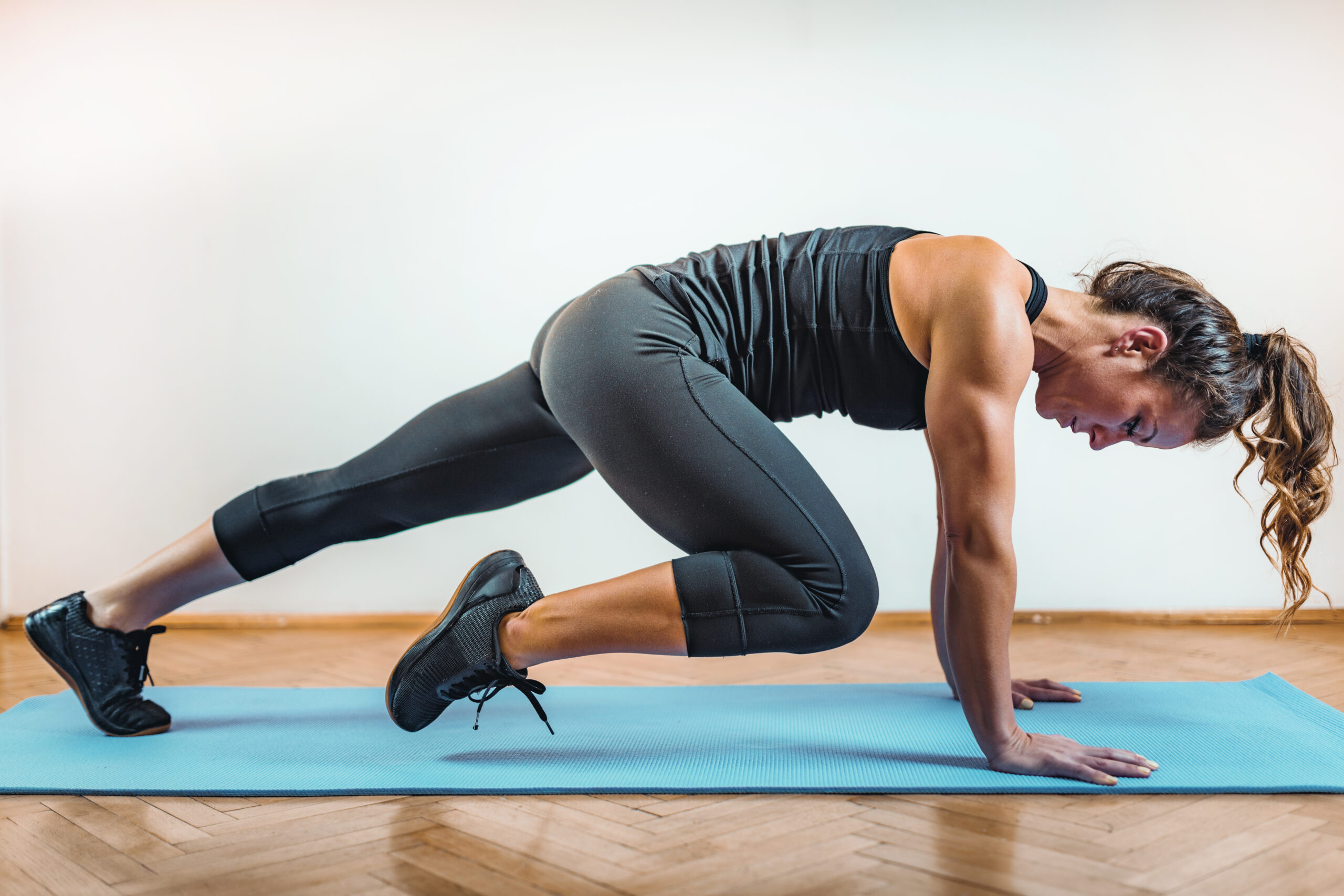High-Intensity Interval Training (HIIT) has become a fitness phenomenon in recent years, and for good reason. This exercise approach offers a time-efficient and highly effective way to improve cardiovascular fitness, burn calories, and achieve various health benefits. HIIT is characterized by short bursts of intense exercise followed by brief periods of rest or lower-intensity activity. In this comprehensive article, we will delve into the world of HIIT, explore the numerous advantages it offers, and provide insights into how it can be integrated into your fitness routine to achieve your health and fitness goals.
What is High-Intensity Interval Training (HIIT) & How Does it Work?
High-Intensity Interval Training is a form of cardiovascular exercise that alternates short, intense bursts of physical activity with periods of low-intensity recovery or rest. These intervals can vary in duration and intensity, making HIIT adaptable to different fitness levels and goals.
The key components of a typical HIIT session include the following…
High-Intensity Phase
This is the portion of the workout where you exert maximum effort, typically lasting 20-60 seconds. Exercises can vary and might include sprints, jumping jacks, burpees, or cycling at maximum effort.
Recovery Phase
Following the high-intensity phase, a brief recovery period is included, typically lasting 10-60 seconds. During this phase, you engage in low-intensity or active recovery exercises to catch your breath and prepare for the next high-intensity interval.
Repetition
HIIT workouts involve repeating the high-intensity and recovery phases multiple times. The number of repetitions may vary depending on the workout and fitness level, but a common structure is 3-5 sets of intervals.
Warm-Up and Cool-Down
A proper warm-up and cool-down are essential for injury prevention and optimal performance. These phases help prepare the body for exercise and aid in recovery post-workout.
Health Benefits of High-Intensity Interval Training (HIIT)
Efficient Calorie Burn and Weight Loss
One of the primary attractions of HIIT is its effectiveness in burning calories and aiding weight loss. The high-intensity nature of the exercise expends a significant number of calories in a relatively short period. The intensity and afterburn effect (excess post-exercise oxygen consumption, or EPOC) mean your body continues to burn calories even after the workout has ended.Studies: A study in the Journal of Obesity (2011) found that HIIT led to greater fat loss and calorie expenditure than steady-state cardio.
Improved Cardiovascular Health
HIIT is exceptional for improving cardiovascular fitness. It enhances heart health by increasing cardiac output and stroke volume, which can lead to a lower resting heart rate, reduced blood pressure, and improved overall cardiovascular efficiency.Studies: Research published in the American Journal of Cardiovascular Disease (2012) found that HIIT can significantly reduce blood pressure and improve cardiovascular health.
Time Efficiency
For individuals with busy schedules, HIIT offers an appealing solution. With shorter workout durations, HIIT provides substantial fitness benefits in less time than traditional steady-state cardio workouts.
Enhanced Endurance
HIIT has been shown to boost endurance and aerobic capacity. This can benefit athletes and fitness enthusiasts looking to improve their performance in various activities, from running and cycling to team sports.Studies: A study in the International Journal of Sports Medicine (2017) found that HIIT significantly improved endurance in recreational athletes.
Muscle Building and Toning
HIIT can help build and tone muscles, especially when bodyweight exercises or resistance training are incorporated. The high-intensity intervals activate muscle fibers and stimulate growth and strength development.Studies: Research published in the Journal of Sports Science & Medicine (2015) indicated that HIIT, when combined with resistance training, can lead to increased muscle mass and strength.
Enhanced Insulin Sensitivity
HIIT can improve insulin sensitivity, making it an effective tool for managing blood sugar levels. It may reduce the risk of type 2 diabetes and support individuals with insulin resistance.Studies: A study in the Journal of Clinical Diabetes & Endocrinology (2018) found that HIIT can enhance insulin sensitivity and glucose regulation.
Fat Loss and Metabolism Boost
HIIT has been associated with fat loss and an increase in metabolic rate. The intense exercise stimulates the release of catecholamines, which play a role in fat breakdown and metabolism.Studies: A study published in the International Journal of Obesity (2012) found that HIIT can lead to a significant reduction in abdominal and subcutaneous fat.
Appetite Regulation
HIIT has been shown to help regulate appetite. It can influence hormones related to hunger and satiety, which may assist in controlling calorie intake and supporting weight management.Studies: Research in the journal PLOS ONE (2014) indicated that HIIT may reduce appetite and the desire to eat following exercise.
Mental Health Benefits
HIIT is not just about physical health; it can also contribute to mental well-being. High-intensity exercise releases endorphins, which can enhance mood and reduce symptoms of depression and anxiety.Studies: A meta-analysis in the Journal of Affective Disorders (2018) suggested that exercise, including HIIT, has a positive impact on mental health.
Improved Oxygen Consumption
HIIT can improve your body’s ability to use oxygen (VO2 max). This is a crucial indicator of overall fitness and endurance, as it measures how efficiently the body transports and uses oxygen during exercise.Studies: A study in the Journal of Applied Physiology (2005) demonstrated that HIIT can significantly increase VO2 max.
Blood Lipid Profile
HIIT has been associated with favorable changes in blood lipid profiles. It can reduce levels of triglycerides, total cholesterol, and increase levels of “good” HDL cholesterol, which supports heart health.Studies: Research in the Journal of Obesity (2012) found that HIIT can improve blood lipid profiles, particularly in overweight and obese individuals.
Bone Health
While HIIT primarily focuses on cardiovascular fitness, the impact of high-impact exercises can also support bone health. Activities like jumping can increase bone density and reduce the risk of osteoporosis.Studies: A study in the Journal of Bone and Mineral Research (2006) showed that high-impact exercises, such as jumping, can enhance bone density.
Variety and Enjoyment
The diverse nature of HIIT workouts, with various exercises and formats, makes them enjoyable and engaging. The challenge and variety can help individuals stay motivated and maintain an exercise routine.
How to Incorporate HIIT into Your Routine
Incorporating HIIT into your fitness routine is relatively straightforward, but it’s important to do so gradually and safely. Here are some steps to consider:
- Consult a Healthcare Professional: If you have underlying health conditions or are new to high-intensity exercise, it’s wise to consult with a healthcare professional before starting HIIT.
- Start Slow: If you’re new to HIIT, begin with shorter intervals and lower intensity. As your fitness level improves, you can gradually increase the intensity and duration.
- Choose Appropriate Exercises: Select exercises that suit your fitness level and goals. Common HIIT exercises include sprinting, burpees, jumping jacks, and bodyweight exercises.
- Warm-Up and Cool-Down: A proper warm-up and cool-down are essential for injury prevention. Spend 5-10 minutes warming up with light cardio and stretching, and allocate time for stretching and relaxation post-workout.
- Balance Your Routine: Incorporate HIIT into your overall fitness routine, which should include a mix of cardiovascular, strength training, and flexibility exercises.
- Listen to Your Body: Pay attention to how your body responds to HIIT. If you experience pain, dizziness, or discomfort, it’s important to stop the exercise and rest.
- Stay Hydrated: HIIT can be intense and lead to significant fluid loss. Ensure you stay hydrated before, during, and after your workout.
- Rest and Recovery: HIIT is intense, and the body needs time to recover. Allow at least 48 hours between high-intensity workouts to prevent overtraining and injury.
HIIT Benefits Conclusion
High-Intensity Interval Training (HIIT) offers a multitude of benefits for individuals seeking efficient and effective ways to improve their fitness and overall health. Whether your goals include weight loss, cardiovascular fitness, muscle development, or enhanced mental well-being, HIIT can be a valuable addition to your fitness routine.
However, it’s essential to approach HIIT with caution and consider your fitness level, health status, and goals. If you’re new to HIIT, consult with a healthcare professional or fitness expert to create a safe and personalized workout plan. By incorporating HIIT into your fitness journey and balancing it with other forms of exercise, you can maximize the benefits and enjoy a healthier and more active lifestyle.
REFERENCES
1. Harvard
2. WebMD
I’m not just a supplement analyst. I’m an extremely qualified one! I am a Certified Nutrition Coach (CNC) and actually received my certification directly from the National Academy of Sports Medicine. I am also a Nutrition & Wellness Consultant, certified by the American Fitness Professionals Association (AFPA).


